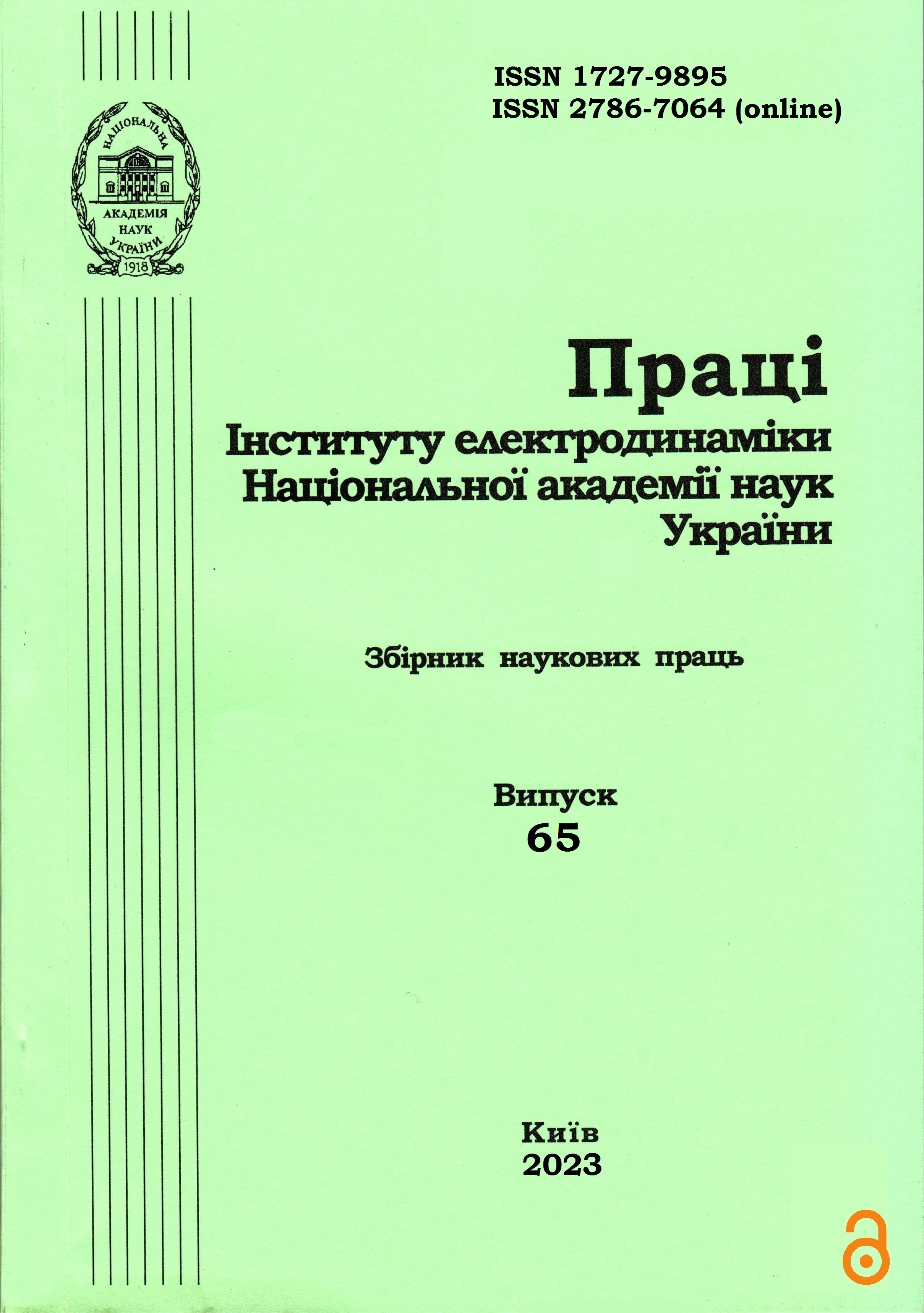Abstract
In the paper, the regularities of changes in electricity losses and the coefficient of its transfer to a linear active load during the discharge of a supercapacitor on the load under different conditions of interruption of discharge currents are determined. The influence of the conditions of interruption of discharge currents of the supercapacitor on the energy characteristics of the discharge circuit is determined, taking into account the fact that the capacity of the supercapacitor is a function of the voltage at its terminals. It was taken into account that this voltage can change its polarity. A mathematical model was developed that takes into account that the discharge process can be both aperiodic and oscillatory. The model was implemented in the Matlab/Simulink software package. A comparison of the energy characteristics during the discharge of a supercapacitor and a conventional linear capacitor on the same linear load at the same initial voltage on these capacitors was carried out. It has been established that the energy delivered to the load during the discharge of a supercapacitor is 1.8 times greater than during the discharge of a conventional linear capacitor charged to the same voltage, but the efficiency of energy transfer for these processes is almost the same. However, when the discharges of a supercapacitor and a conventional linear capacitor are forcibly interrupted, the efficiency of energy transfer to the load increases, and the efficiency during the discharge of the supercapacitor is always higher. Bibl. 14, fig. 3, tables 2.
References
Vinnychenko D.V., Nazarova N.S. Research of characteristics of high voltage transformerless resonant charger of capacitary storage device. Tekhnichna elektrodynamika. 2019. No 1. Pp. 25–28. DOI: https://doi.org/10.15407/techned2016.04.038 (Ukr)
Shydlovsky A.K., Suprunovskaya N.I. Energy processes in the electrical circuits of pulsed discharge installations with a capacitive energy storage at limitation of duration of its discharge on electrospark load at nonzero condi-tions of its charge. Theknichna elektrodynamika. 2010. No 1. Pp. 42–48. (Rus)
Suprunovskaya N.I., Shcherba A.A. Processes of energy redistribution between parallel connected capacitors. Tekhnichna elektrodinamika. 2015. No 4. Pp. 3–12. (Rus)
Izotov V.Yu., Gromadsky D.G., Maletin Yu.A. Simulation and calculation of the operating parameters of the su-percapacitor. Naukovi visti NTUU "KPI". 2008. No 6. Pp. 114–118. (Rus)
Beguin F., Frackowiak E. Supercapacitors: Materials, Systems and Applications. Wiley-VCH Verlag GmbH & Co. KGaA, 2013. 527 p.
Maletin Y., Stryzhakova N., Zelinskyi S., Chernukhin S., Tretyakov D., Mosqueda H., Davydenko N., and Drobnyi D. New Approach to Ultracapacitor Technology: What it Can Offer to Electrified Vehicles. Journal of Energy and Power Engineering. 2015. No 9. Pp. 585–591. DOI: https://doi.org/10.17265/1934-8975/2015.06.010
Mihailescu B., Svasta P.,Varzaru G. Hybrid Supercapacitor-Battery electric system with low electromagnetic emissions for automotive applications. U.P.B. Scientific Bulletin, Series C. Iss. 2. V. 75. 2013. Pp. 277–290.
Zubieta L., Bonert R. Characterization of Double-Layer Capacitors for Power Electronics Applications. IEEE Trans. On Industry Applications. January-February 2000. No 1. V. 36. Pp. 199–205. DOI: https://doi.org/10.1109/28.821816
Zhao Jingyuan, Burke Andrew F. Review on supercapacitors: Technologies and performance evaluation. Journal of energy chemistry. August 2021. Vol. 59. Pp. 276–291. URL: https://doi.org/10.1016/j.jechem.2020.11.013
Burke A., Miller M. The power capability of ultracapacitors and lithium batteries for electric and hybrid vehicle applications. Journal of the Power Sources. Jan. 2011. Iss. 1. V. 196. Pp. 514–522. DOI: https://doi.org/10.1016/j.jpowsour.2010.06.092
Burke A., Zhao H. Supercapacitors in micro-and mild hybrids with lithium titanate oxide batteries: Vehicle simulations and laboratory tests. Research Report – UCD-ITS-RR-15-20. Institute of Transportation Studies. University of California, December 2015. URL: https://escholarship.org/uc/item/87j1k9fn
Rafik F., Gualous H., Gallay R., Crausaz A., and Berthon A. Frequency, thermal and voltage supercapacitor characterization and modeling. Journal of Power Sources. 2007. No 2. V. 165. Pp. 928–934. DOI: https://doi.org/10.1016/j.jpowsour.2006.12.021
Shcherba A.A., Suprunovskaya N.I., Beletsky O.A. Power characteristics of supercapacitors during their charge from a source of voltage and discharge on resistive load. Pratsi Insitutu elektrodynamiky Natsionalnoi Akademii Nauk Ukrainy. Kyiv, 2014. No. 39. Pp. 65–74. (Rus)
Shcherba Anatolii, Suprunovska Nataliia, Biletsky Oleh. Increasing Energy Efficiency of Charge Circuits of Su-percapacitors from Voltage Source. 2020 IEEE 7th International Conference on Energy Smart Systems (ESS). Kyiv, Ukraine, 12-14 May 2020. DOI: https://doi.org/10.1109/ESS50319.2020.9160218

This work is licensed under a Creative Commons Attribution-NonCommercial-NoDerivatives 4.0 International License.
Copyright (c) 2023 А.А. Shcherba, N.І. Suprunovska, S.V. Belkin, I.M. Masluchenko




